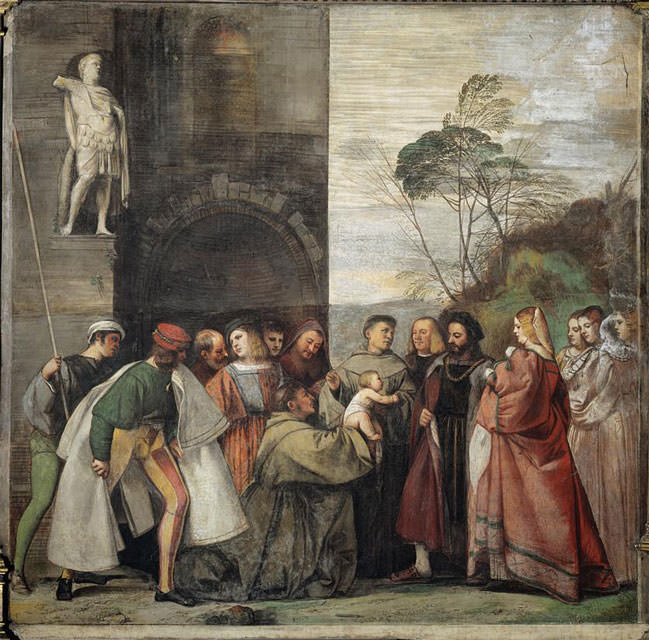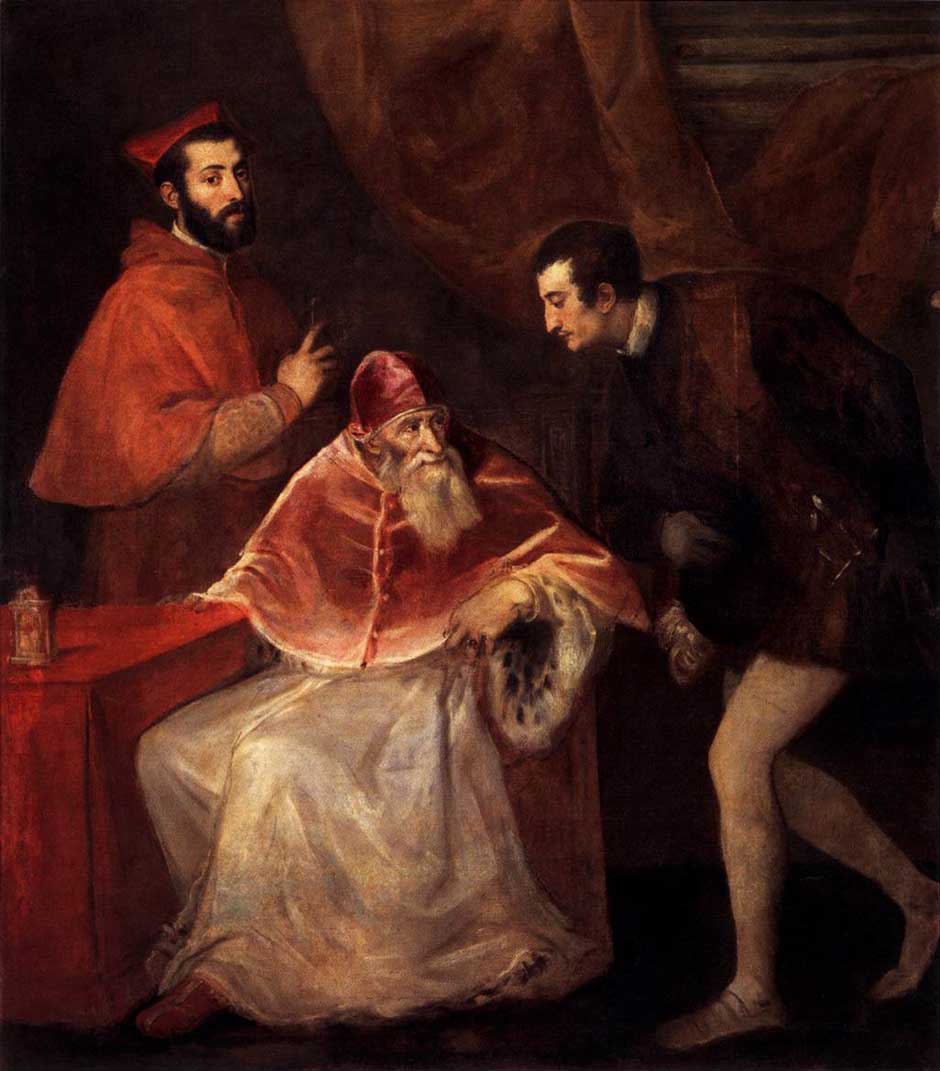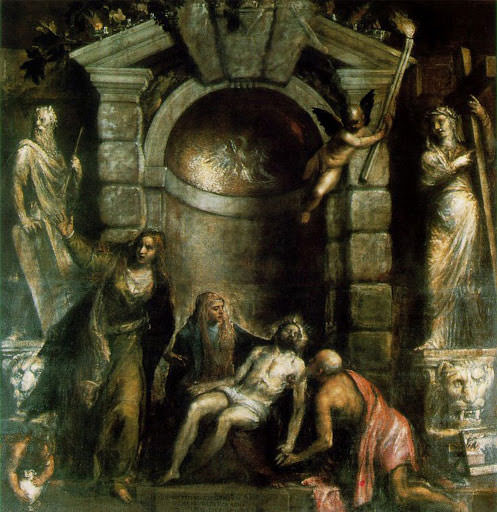“Titian was a painter of astonishing versatility, a master of landscape, of portraiture, of sacred painting, historical painting, mythology, a magician who could turn a dab of pigment into a flame, a pleat, a thunderbolt, a twinkle in the eye, a Cupid’s wing,” Ingrid Rowland writes in the November 7, 2013 issue of The New York Review. Here she presents a selection of Titian’s paintings with commentary.

State Hermitage Museum, St. Petersburg
Titian: The Flight into Egypt, circa 1506–1507
Shortly after a disastrous war ravaged the countryside near Venice, the very young Titian—his own hometown, Pieve di Cadore, sacked in the fighting—painted this idyllic view of Jesus, Mary, and Joseph as refugees escaping from Palestine to Egypt. The little family also provides a portrait of the human condition; here the journey through life is guided, as Titian presents it, by a wingless angel.

Scuola del Santo, Padova
Titian: Miracle of the Speaking Babe, 1511
Painted in 1511 for the great pilgrimage church of Saint Anthony in Padua, on the mainland opposite Venice, this powerful drama shows a husband who has wrongly accused his wife of adultery standing with his wife and their child in the presence of Saint Anthony. The baby, inspired by the saint, turns to his father and speaks out, thus proving his mother’s integrity. Titian shows the beautiful young mother’s humiliation and the father’s pusillanimity with ruthless honesty.

Santa Maria Gloriosa de' Frari, Venice
Titian: Assumption of the Virgin, 1516–1518
This altarpiece for the great Franciscan church of Venice established Titian, in 1518, as a master painter. In keeping with the Franciscan devotion to the Virgin Mary, he shows her rising from her deathbed as a young woman, whirling up into the highest reaches of Heaven to meet God, who descends toward her. The golden color of the heavenly realm contrasts with the blue sky of earth as the heavens split open to receive their newest citizen.

Museo di Capodimonte, Naples
Titian: Danaë, 1553–1556
Danaë was fated to bear a son more powerful than his grandfather, the king, and so the king locked her away. In order to visit her behind closed doors, the god Zeus turned himself into a shower of gold, and Danaë bore a son, Perseus, who avenged her mistreatment with spectacular ingenuity, turning his evil grandfather to stone. This painting was locked away in the “Secret Cabinet” of the Neapolitan monarchy together with lascivious objects from Pompeii until the Cabinet was opened to the public by the Italian patriot Giuseppe Garibaldi.

Museo di Capodimonte, Naples
Titian: Portrait of Paul III with his grandsons, 1545–1546
Pope Paul III, nearly eighty but still sharply intelligent, looks with evidient distaste at his fawning grandson, Ottavio Farnese, who greets the old man with an elaborate bow. His brother, Cardinal Alessandro Farnese, looks out at the viewer as if his own pontificate cannot be far off. He was never elected pope, but he was one of the chief power brokers in sixteenth-century Rome. The pope, according to some accounts, did not like this painting; he could hardly complain of its superb artistic qualities, but he may have feared the effects of its honesty.

Santa Maria Assunta dei Gesuiti, Venice
Titian: The Martyrdom of Saint Lawrence, circa 1560
A dramatic, brutal symphony of whites, blacks, and reds, this painting shows the early Christian deacon Lawrence being tortured by roasting on an iron grill. According to legend, Lawrence told his tormentors, “You can turn me over now; I’m done on this side” but Titian chooses to show the saint’s terrible agony, not his wry humor.

Galleria dell'Accademia, Venice
Titian: Pietà, circa 1575
This is Titian’s last painting, designed for his own tomb chapel, and it can only truly be appreciated by seeing it close up. Then we can see how intensely the old man, a portrait of Titian himself, peers into the face of the dead Christ, appreciate the transparency of his wispy beard, made up of translucent glazes, and detect the veins that show through the skin of his bald scalp. His muscles are flushed with life, whereas a silvery Christ shimmers in the early stages of decomposition. Titian changed his style many times, but never lost his grip on the art of painting.
Ingrid Rowland’s piece “The Local, Universal Master” appears in the November 7, 2013 issue of the New York Review.


